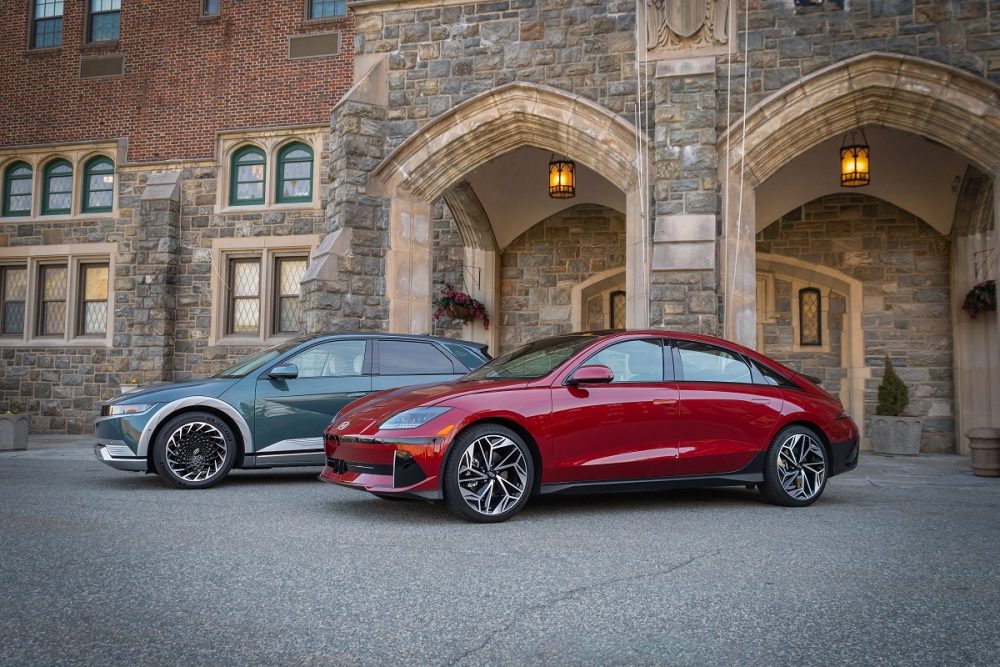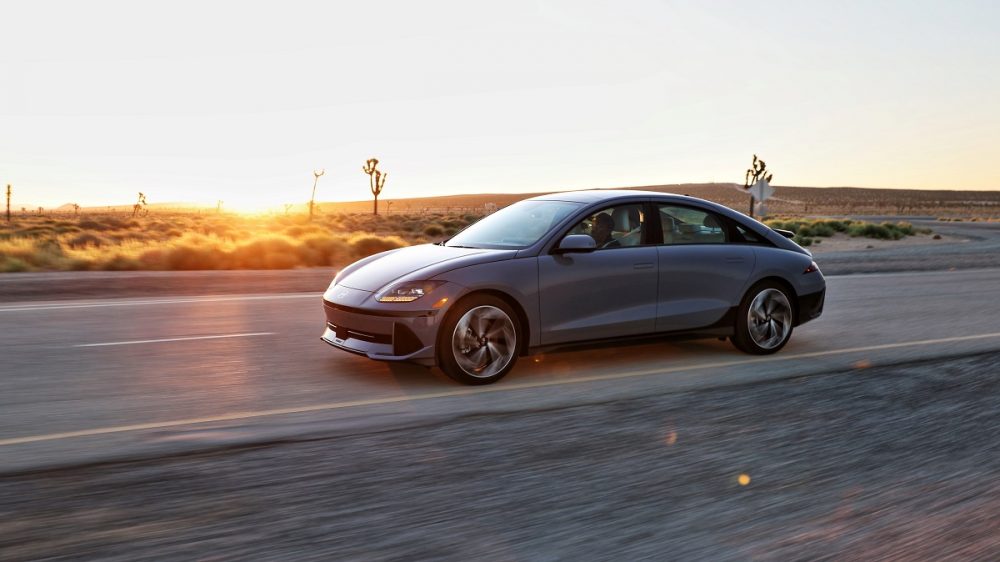Hyundai Ioniq 5 vs. Hyundai Ioniq 6: Here’s How These 2 EVs Differ
For 2024, the Hyundai lineup includes a pair of advanced electric vehicles — the Ioniq 5 and the Ioniq 6. Because of their many similarities, deciding between these models can present a challenge to consumers. This guide will help you compare the two EVs, pinpoint key differences, and make the Ioniq 5 vs. Ioniq 6 choice that’s right for your needs.
Exterior design
The 2024 Hyundai Ioniq 5 and the 2024 Hyundai Ioniq 6 present a dramatic contrast when it comes to exterior design. The Ioniq 5 slots into the compact SUV segment and sits a bit taller and higher off the ground, although it’s styled to look like a large, sporty hatchback. Meanwhile, the Ioniq 6 is unmistakably a midsize sedan, showcasing a look that’s so long, sleekly curved, and aerodynamic that Hyundai refers to it as an “electrified streamliner.”
Passenger space
Not surprisingly, the SUV-like Ioniq 5 enjoys a passenger-space advantage over the Ioniq 6. This is most noticeable in the second row — the Ioniq 5 provides 39.4 inches of rear legroom and 38.7 inches of rear headroom, while the Ioniq 6 only manages 34.7 inches and 36.9 inches, respectively. It’s not a totally one-sided comparison, though, because the Ioniq 6 actually comes out ahead on space in the first row. It provides 45.4 inches of legroom and 40.2 inches of headroom up front for a roomier feel than the Ioniq 5 and its measurements of 41.7 and 39.8 inches.
Cargo space
The Ioniq 5 has even more of an advantage when it comes to cargo space. When both seating rows are being used, the cargo compartment offers 27.2 cubic feet of capacity. And when the rear seats are folded flat, the Ioniq 5 can hold a max of 59.3 cubic feet. The Ioniq 6 has more of a traditional trunk, and it can hold about 11.2 cubic feet of cargo. The rear seats do fold down to help you fit larger items, but the steeply sloped roof doesn’t allow for a great deal of extra space. Both vehicles also have a front “frunk” compartment, which adds an extra 0.85 cubic feet of storage space for the Ioniq 5 and 0.5 cubic feet for the Ioniq 6.
Driving range
When comparing electric vehicles, driving range is one of the most important factors to consider. The Ioniq 5 and Ioniq 6 ride on the same platform and offer two virtually identical powertrain options, but the Ioniq 6 claims a distinct range advantage thanks to its aerodynamically optimized design. Here’s how the models match up:
- 225-horsepower RWD powertrain: up to 361 miles of EPA-estimated range for Ioniq 6; up to 303 miles for Ioniq 5.
- 320-horsepower dual-motor AWD powertrain: up to 316 miles of EPA-estimated range for Ioniq 6; up to 260 miles for Ioniq 5.
The Ioniq 5 also offers a 168-horsepower RWD configuration with up to 220 miles of EPA-estimated range.
Similarities between the Ioniq 5 and the Ioniq 6
Whichever model you end up choosing, you’ll find that the Ioniq 5 and Ioniq 6 share quite a bit in common. When connected to an ultra-fast charger, both can go from a 10% to an 80% battery charge in as little as 18 minutes. Both models offer exterior features like a power charge-port door, auto-retracting door handles, and pixelated LED lighting. On the inside, the Ioniq 5 and Ioniq 6 have similar minimalist cabin styling, twin 12.3-inch screen arrays, SmartSense safety technologies, and available amenities.
The bottom line: If driving range and sedan design are your priorities, the Hyundai Ioniq 6 is likely to be your best bet. Seeking roomy seating for five, versatile cargo space, and SUV-like styling? Opt for the Hyundai Ioniq 5.
A longtime editor/writer and recently transplanted Hoosier, Caleb Cook lives in Xenia, Ohio. His favorite activities are reading and listening to music, although he occasionally emerges from the heap of books and vinyl records in his basement to stand blinking in the sunlight. Once fully acclimated to the outside world again, he can be observed hanging out with his wife, attempting a new recipe in the kitchen, attending movies, walking the dog, or wandering into a local brewery to inquire about what’s on tap. See more articles by Caleb.




